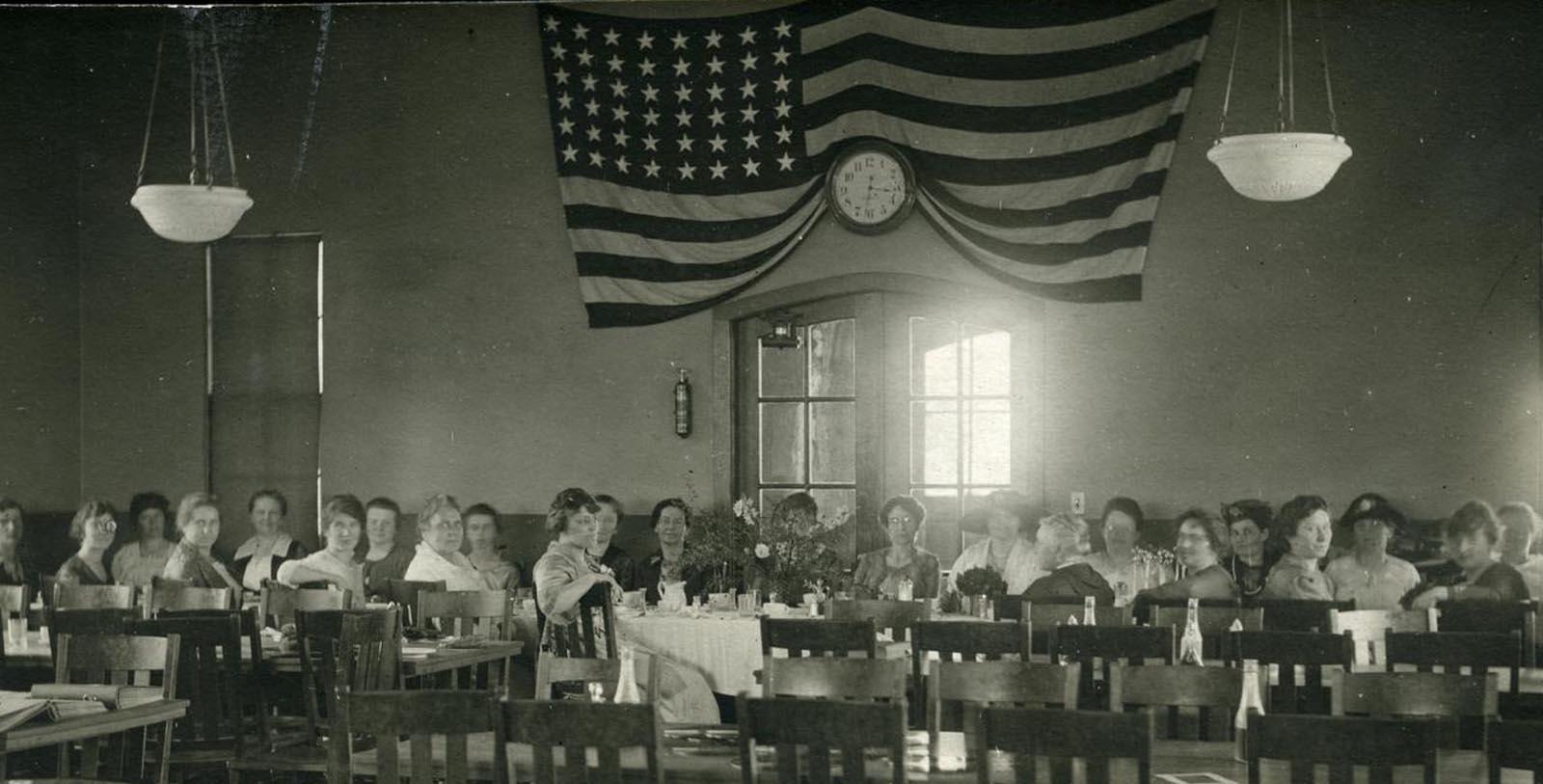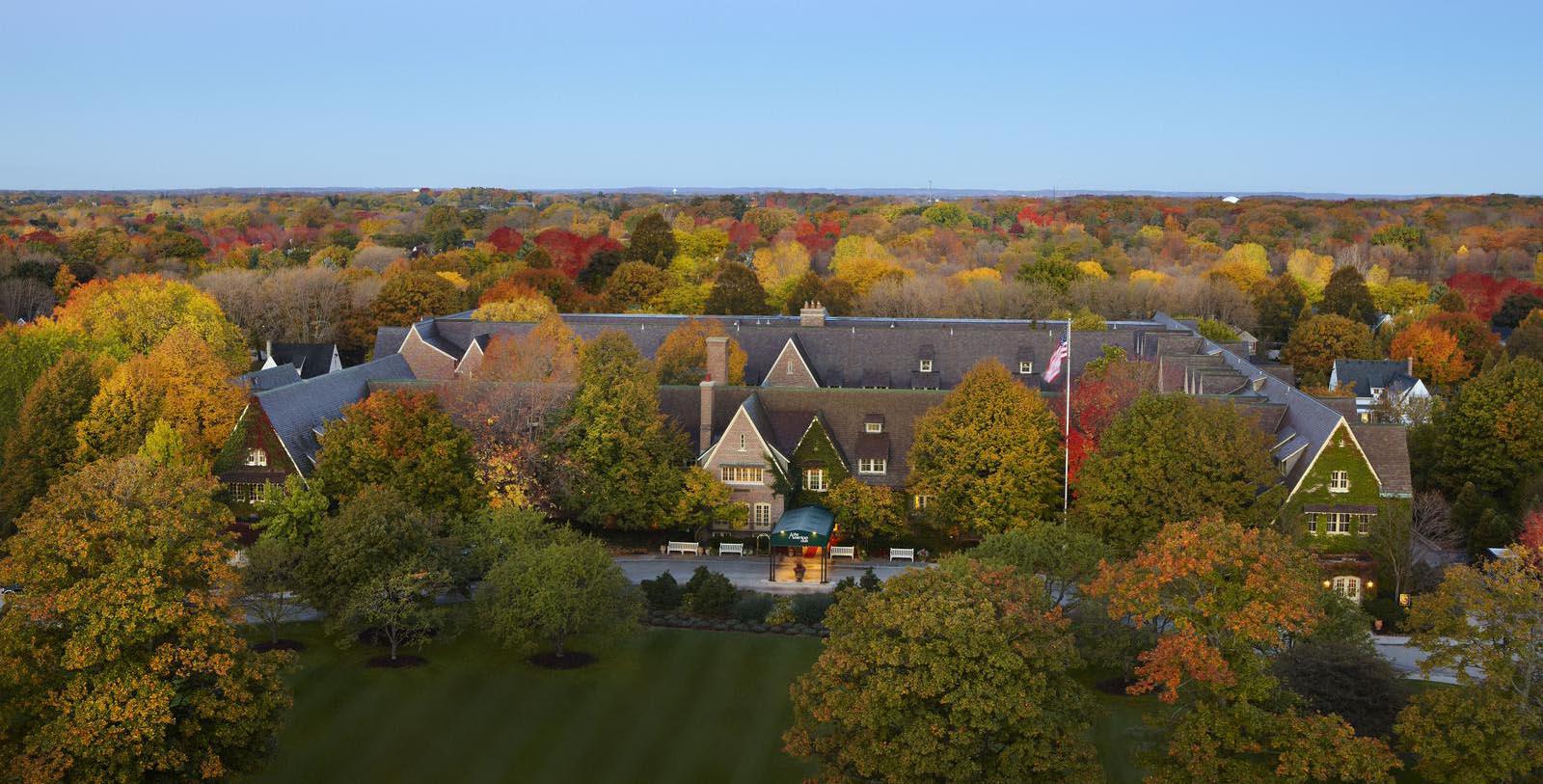Receive for Free - Discover & Explore eNewsletter monthly with advance notice of special offers, packages, and insider savings from 10% - 30% off Best Available Rates at selected hotels.
history
Discover the The American Club, adapted from the Kohler immigrant worker housing facility into an elegant village inn.
The American Club, a member of Historic Hotels of America since 1991, dates back to 1918.
VIEW TIMELINE
The Story of KOHLER
The history of Kohler is a story of entrepreneurial passion and drive. It is also a human story of lifting up one another to a more gracious life. Learn more about this company's great heritage here.
WATCH NOWThe American Club can trace its history back to the Kohler Company, one of America’s leading manufacturers of plumbing fixtures. Founded by an Austrian named John Michael Kohler in 1873, the business had spent years operating out of Sheboygan, Wisconsin, before it moved to its present location some two decades later. Kohler’s descendants—specifically his son, Walter—had decided to build a model company town for the business’ employees after its factory burnt down. Kohler subsequently built both a new plant and dozens of residential communities on just under five miles of land. But the younger Kohler never forgot his father’s humble roots as an immigrant and desired to construct a unique housing complex for the throngs of European émigrés that had started to join communities in the region. His new building would house “single men of modest means,” who were in dire need of a friendly support network in the “New World.” But Walter J. Kohler also wanted to foster an environment that would help those tenants achieve American citizenship, offering a safe environment to learn English and foster a deep sense of patriotism. As such, he commissioned the creation of “The American Club” with the hope that it would serve as an inspirational beacon for new migrants. Architect Richard Phillips—a close friend of Kohler’s—spearheaded the design, using a wonderful blend of Tudor Revival-style architecture to create the building’s breathtaking appearance. Kohler spared no expense in constructing The American Club. Coarse red brick was imported directly from Illinois to construct the façade, while Vermont slate made the building’s beautiful gable roof. A few spaces—including the lounging room and the reading room—were named after famous citizens, such as Abraham Lincoln and George Washington. American flags hung predominantly in nearly every room, too, with some of the largest hung in the public spaces and meeting venues.
Several hundred people gathered on the lawn when Walter J. Kohler dedicated the facility on June 23, 1918. A number of those in attendance were, in fact, immigrant workers who lived in nearby Sheboygan as laborers. Most would soon become residents of The American Club, as well as employees of the Kohler Company. Charged $27.50 a month for room and board, Kohler endeavored to ensure that working conditions inside the factory were conducive for his tenants. He hoped that safe working conditions and comfortable living quarters would cultivate a studious environment within which to prepare for their American citizenship examinations. (Working at the Kohler Company was not without its setbacks, as various union strikes impacted the business during the Great Depression). Kohler even obtained special night classes for the residents at the Kohler Public School, just so they had more time to get ready. The Kohler Company subsequently sponsored the citizenship of dozens of immigrants each year, transporting large groups down to the county courthouse on every “Americanization Day.” Afterward, the proud individuals had their pictures taken on the balcony of the Lincoln Room in honor of the achievement. Special banquets were held throughout the course of the day as well, given specifically to the recently “naturalized” Americans. By 1930, the Kohler Company estimated that it had helped nearly 700 émigrés successfully pass their citizenship tests. Even after Walter J. Kohler’s death in 1940, this patriotic zeal continued to permeate throughout The American Club. More immigrants continued to arrive at The American Club to use its resources as a means of obtaining citizenship. Over time, those enterprising individuals moved out into the surrounding community, where their descendants continued to live for generations.
Great changes came around the middle of the century, the greatest of which was the debut of “The Wisconsin Room.” Originally the dining hall, local architects designed the space as a means of commemorating the heritage of both Wisconsin and the United States. Murals of great Wisconsinites hung throughout the space, while a statue of Old Abe—an eagle that accompanied a regiment of Wisconsin soldiers during the Civil War—sat on the east side of the room. Then some 60 years after The American Club opened, the U.S. Department of the Interior listed the facility on the U.S. National Register of Historic Places. But in the late 1970s, the Kohler Company made the decision to close the entire complex. Investing millions, it decided to transform The American Club into a luxurious holiday retreat that offered the best in modern comfort. Nevertheless, the Kohler Company also strove to preserve the memory of the immigrants that once called The American Club home. It continued to embrace the building’s patriotic past as well, configuring every guestroom to feature the portraits and memorabilia to many great Americans. Among the most notable citizens featured inside the accommodations include actress Mary Pickford, author Ernest Hemingway, ornithologist John James Audubon, and baseball legend Lou Gehrig. Not wishing to rest on their laurels, the hotel’s ownership team decided to construct the West Wing I extension a year later, which created 60 more guestrooms for The American Club. (A second extension called the “West Wing II” debuted shortly thereafter). The work ultimately resulted in The American Club receiving a five-diamond rating from the American Automobile Association (AAA). More recently in 2012, the Kohler Company completed an extensive restoration that granted The American Club five-star status from Forbes. Among Historic Hotels of America’s most active members, The American Club continues to thrive as one of Wisconsin’s most outstanding vacation destinations.
-
About the Location +
Like The American Club, the Village of Kohler can trace its heritage to the Kohler Company and its founder, John Michael Kohler. An immigrant from Austria, Kohler had originally established the business upon purchasing the Sheboygan Union Iron and Steel Foundry for $5,000 alongside Charles Silberzahn. (He had obtained the entire complex from his father-in-law, Jacob Vollrath). But the Austrian émigré had managed to buyout Silberzahn within a matter of years, becoming the sole proprietor of the foundry. Renaming the business after his family name, Kohler set about overseeing the manufacture of various cast iron and steel items that included everything from farming equipment to cemetery monuments. Yet, the fate of the business changed forever when Kohler invented a way to apply an enamel coating onto a cast-iron horse trough. The breakthrough enabled Kohler’s factory to create a line of luxurious bathroom and kitchen appliances, with its most notable product being bathtubs. The Kohler Company soon established itself as one of the preeminent manufacturers of plumbing fixtures in the United States by the dawn of the 20th century. Its operations had grown so large that it led John Michael Kohler to relocate the factory a few miles to the east of Sheboygan on several hundred acres of undeveloped land. Nevertheless, the business was not without its hardships. The entire complex suffered from fires, with the most recent one transpiring in 1901. In the aftermath of the latest incident, the company’s president, Robert J. Kohler—one of John Michael Kohler’s sons—endeavored to build back stronger than ever. His brother, Walter J. Kohler, continued the work when he became president after the former’s death in 1905.
A visionary, Walter J. Kohler aspired to do more than just rebuild the factory—he yearned to create a company town around the new facility that could cater to the needs of its employees. Kohler particularly held a humanitarian interest in the poor, aspiring greatly to improve their condition whenever possible. As such, he believed that his planned community would provide both affordable housing and economic opportunities. Shortly after his appointment as the company’s president, Kohler went on a grand journey of Europe with his friend, architect Richard Phillips. Together, the two men reviewed the architectural style of the continent, specifically England and its famous gardens communities. When they returned, Kohler tasked Phillips with designing the layout of the new town based on the principles they observed overseas. Over the next several decades, Phillips and his firm— “Brust and Phillips”—worked hard to create the settlement, which Walter J. Kohler took to calling “Kohler Village.” Perhaps the greatest building constructed in Kohler Village at the time was The American Club, created to serve as a home for single foreign men without any connections in greater Sheboygan County. Immigrants from all over began to arrive in Kohler Village, mainly Dutch, German, and Russian families that were interested in working for the Kohler Company. (Sheboygan County had been a destination for European immigrants since the early 19th century, too, attracting thousands of people from abroad due to the presence of heavy industry nearby). Today, Kohler Village is a wonderful vacation retreat just moments away from the tranquil waters of Lake Michigan.
-
About the Architecture +
When architect Richard Phillip first began designing The American Club more than a century ago, he used Tudor Revival-style architecture as the source of his inspiration. Tudor Revival architecture is best defined as an eclectic mixture of late medieval building traditions that influenced the appearance of English villages during the Middle Ages. The form specifically attempted to emulate the historical character of the feudal cottage that once dominated England’s landscape. The name “Tudor” is somewhat of a misnomer, though, for the design aesthetic does not borrow any of its principles from buildings constructed during the reign of the 16th century Tudor monarchs. Tudor Revival style first became prevalent in the United Kingdom at the beginning of the 20th century, when architects were exploring alternative ways to connect better with the past. Tudor Revival was specifically applied to residential homes, although some commercial structures—like hotels—also bore the unique appearance. It then jumped across the Atlantic to the United States, where it was second only in popularity to Colonial Revival architecture. Architects at the time had been motivated by the various revivalist movements spawned from the World’s Fair of 1893—known as the “Columbian Exposition”—which encouraged artists and intellectuals to embrace romanticized versions of history. As such, medieval building practices became widely accepted.
Buildings constructed with Tudor Revival-style architecture were typically identified by their half-timbering. In essence, “half-timbering” is the practice of constructing a series of interlocking load-bearing timber frames that were then filled with some kind of plaster mold. As such, the architects left the frame exposed, creating a visibly distinctive appearance. Another common characteristic of Tudor Revival-themed buildings was the presence of a steeply pitched roof that usually featured heavy shingles. This area of the structure was often lined with overhanging gables, as well as eaves and diamond-shaped casement windows. In many cases, the architects endeavored to make the roof appear as if it had been thatched. Stone chimneys also protruded from the roof, conveying rich details. A wonderful, round arched doorway guided guests into the interior, too, which featured an irregular floor plan. The use of such a layout was normal inside late medieval English homes, as it usually took several generations to build. Modern architects hence attempted to capture that ambiance whenever they set about creating the blueprints for Tudor Revival-style buildings. Today, Tudor Revival-style architecture is cherished for its ability to ensconce its tenants with a charmingly tranquil atmosphere.































